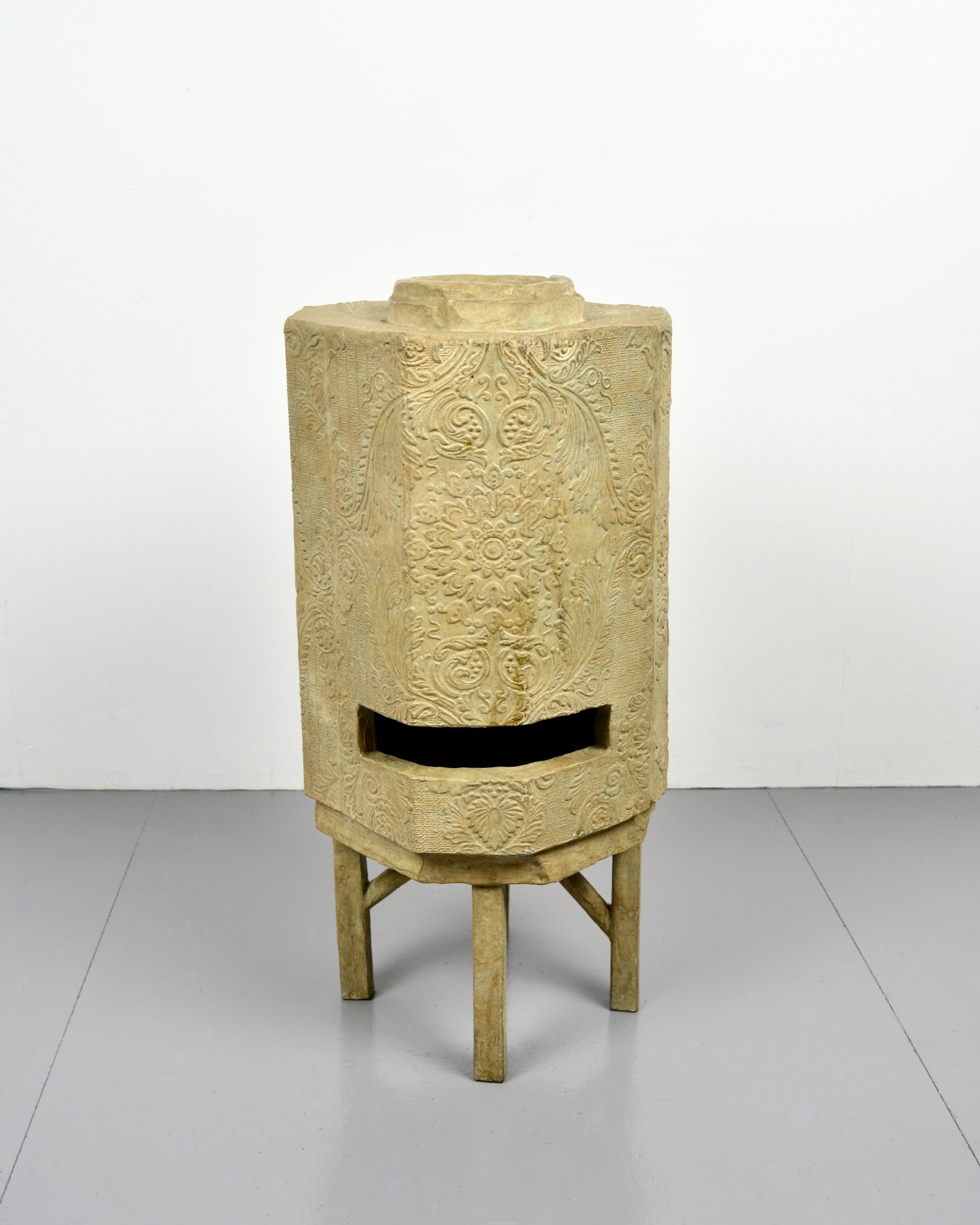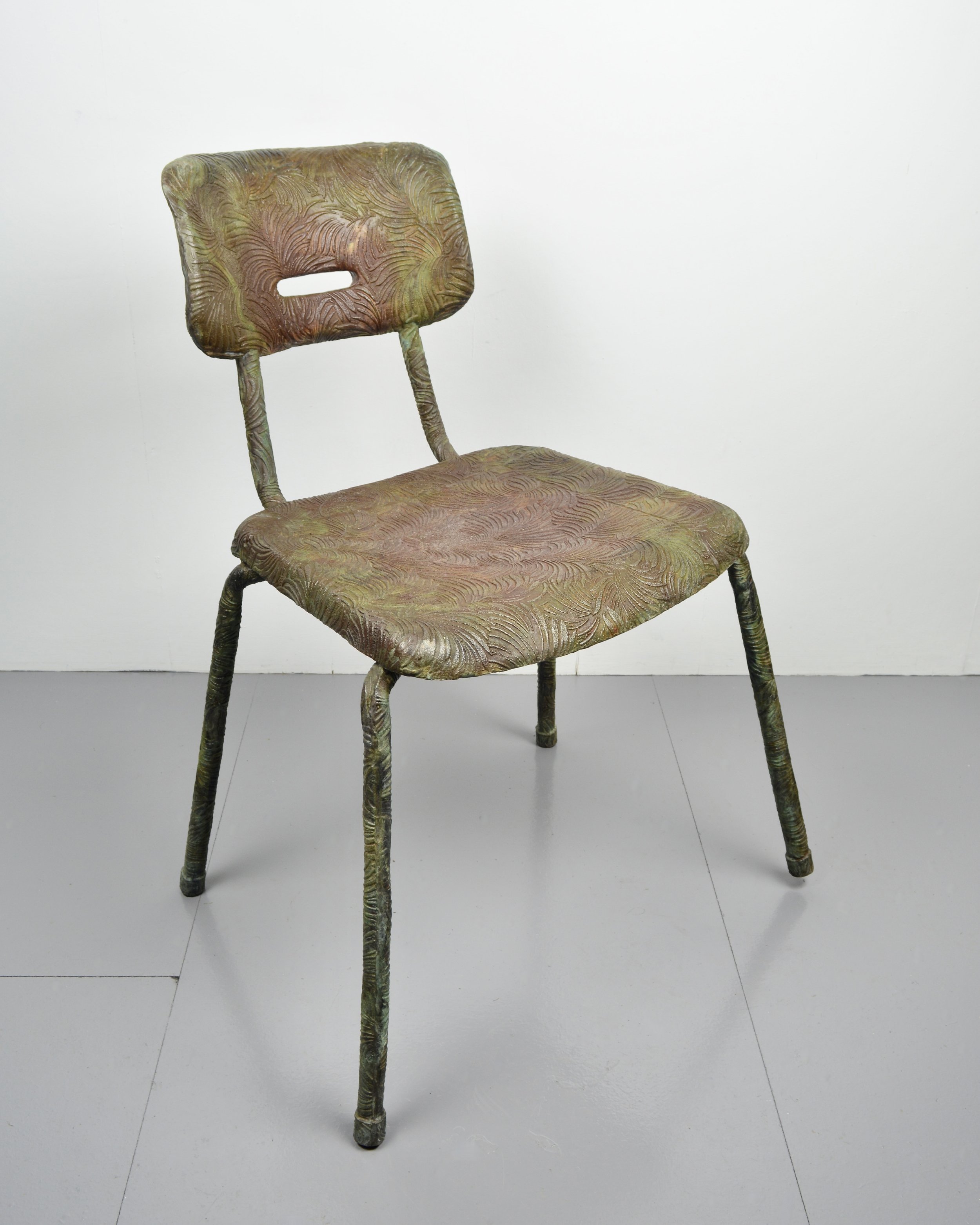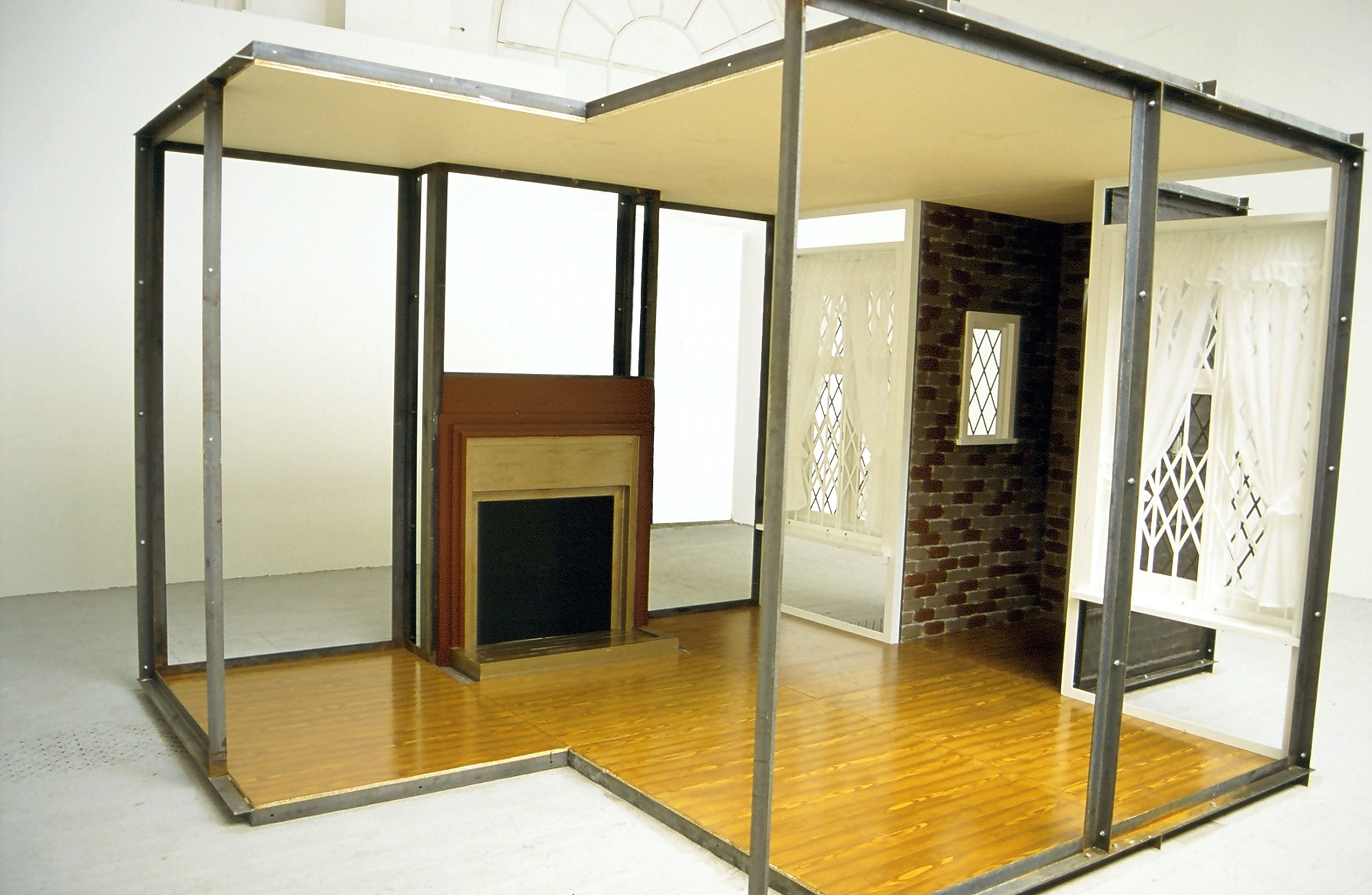‘Occupied’, Bronze, H 53cm x W 23cm x D 23cm, 2003; ‘Traveller’, Bronze, H 83cm x W 50cm x D 60cm, 2003
‘Morphology’ Doug Burton and Nicky Hirst
The Form of Things Unknown: Doug Burton and Nicky Hirst's 'Morphology' abridged 2008
A conversation with Doug Burton can take you on quite a journey. He talks about Poincaré, about whom I know practically nothing, but who is, I gather, the father of topology, a subject Burton is extremely interested in. He also laid the foundations of chaos theory, in a famous lecture of 1889. He remarked that scientists study nature not because it is useful but because it is beautiful. DʼArcy Wentworth Thompson writes in the influential On Growth and Form, (1) that we learn from Poincaré that ʻevery natural phenomenon, however simple, is really composite, and every visible action and effect is a summation of countless subordinate actions.ʼ Burton talks about how an object can be unfolded into another object. And how any object with a hole in it can become a torus, or doughnut-shape. About his attendance of a Naomi Klein lecture on ʻshock doctrine.ʼ About ʻShatter-structure.ʼ About his residency at Cern. About how cosmologists are trying to define the fabric of the universe, and asking, are we in a teleological universe? It might be easy to feel out of oneʼs depth, except that he talks so lucidly and engagingly. He is someone who is interested in things.
A favorite book, Manuel de Landaʼs A Thousand Years of Nonlinear History, (2) speaks, as Burton puts it, of ʻmaterial-biological-linguistic-cultural history as a mass-stuff of the world that forms a sort of crust, as a flow of lava erupts, solidifies, and then erodes and is replaced. Like a fossilized snapshot or a slice of history. And I keep coming back to that idea of the frozen historical moment.ʼ
He talks about the process of sculpting and how this has led to the making of his collaged computer animations. And about the difference between painting and sculpture – ʻwhich is real stuff not imagesʼ - and the effect that has on how an artist communicates.
His sculpture Critical Mass puts me in mind of a classical narrative group, something in marble, Laocoon, say – with its dignified frozen-gesture look, and the way it has a front and two sides, not to mention the human proportions. And it reminds me of a Picasso Minotaur drawing – its shape suggests this and that black wax might be the sculptural equivalent of Picassoʼs black ink.
Burton talks of frozen gesture in geological terms, as befits his interests. ʻCritical Massʼ then, is lava. Lava freezes at a particular moment, ʻbut you feel the movement in it – which is that amazing thing nature does.ʼ Lava stilled and eroded – ʻas if,ʼ Burton says, ʻthe world around it had eroded away and this was what was left.ʼ As if this comical group of black shapes, like Ovidʼs Metamorphoses translated into tarmac – were what lies at the core of planet earth – and thus also suggested what might happen in other planets, other solar systems.
I am struck by how unfazed Burton is by suggestions of what his sculptures look like, make one think of, or indeed mean. He does have qualifications: he admits the sci-fi, stage-prop look of them, but points out that they have further-reaching intentions. He admits their comic aspects, but insists also on their seriousness. While he describes his work – makes it, I think – in terms of geology, both sculptures here look as if they are about to leap into life, like the rocks in a sci-fi film turning into creatures. He aims to make things that look like fragments or excavated things, but which are more fluid, and appear to ʻcreate themselves.ʼ He adds: ʻas if from another dimension, with an alien presence.ʼ And he doesnʼt want to be billed as one those artists who worthily effect a meeting of art and science. ʻSci-artʼ as itʼs known (nothing to do with science fiction) isnʼt what heʼs aiming for at all. ʻI hate it,ʼ he tells me. About Cern, he comments, interestingly, ʻI was astonished by how decorative the things they were building were.ʼ
In general, as I say, he is remarkably open to suggestion. He treats his work as he treats other artistsʼ work: it should maintain its mystery, remain always a little unknown, even to the artist. If you fully understand a work of art, it loses its interest: ʻif the loop isnʼt endless then your relationship with it ends.ʼ
He speaks of his sculpture ʻallowing the world to permeate it.ʼ Itʼs an unusual turn of phrase. Is there a ʻRorschachʼ aspect to it? ʻYes,ʼ he allows, ʻbut also, because Iʼm wrestling with it, itʼs inevitable there will be references to past sculpture, and to a lot of different things. I like the sense that itʼs about everything and nothing at the same time. I donʼt want things to be pinned down.ʼ
His multi-valent, open approach must not be interpreted as lack of focus. The reverse is true. His starting points and interests are particular, specific. But - and hereʼs the rub - problem solving, ways of thinking, ʻthe idea of the interconnectedness of all thingsʼ - the architecture of thought as much as the architecture of matter and space – are at the heart of his work. They constitute its real subject.
His work is about how the physical, in reality and in imagination, can be related to pure ideas. To which question of course there is no answer. But asking it makes us what we are. So itʼs a tentative, humble, model of thought. And thought involves dealing with physical stuff: hence sculpture. Art maintains the contact between things and ideas.
ʻThe things and ideas I want to connect with are bigger and more complex than me, but making art does bring me closer to them. Iʼm interested in how to open up to things and how to let those things happen. The connections are there because Iʼm making them.
Itʼs hard, learning how to breathe easily.ʼ
David Lillington
Notes:
1 1917.
2 1997.
Published by MOCA London in conjunction with Royal Academy, London
© Royal Academy Gallery, Hornsey, London 2008
To order the full unabridged Catalogue please goto Amazon.com or contact me at doug@dougburton.net
Firestone, 2003, Plasticine, H 170cm x W 140cm x D 80cm
“Sculpture, Print and Digital Media 2008-2012”
From 2008-2012 the work explored the morphology of structures in both wax sculptures and digital media. The plasticity of materials investigated a process of making that sought to immerse the viewer.
‘Continuum’, solo show, The Shwartz Gallery, London, 2008.
A film by Rachel Lister and Marcus Yau. Filmed over 4 months in 2008 the film aims to gain an insight into Doug Burton's practice and the influences that drive him through his creative process.
“Selected early works 1999-2002”
Nooks and Crannies takes us inside, underneath, around and behind the spaces and places that form our urban environment. Working in response to his experiences of life in London, in comparison to a rural upbringing, Doug Burton explodes the familiar façade revealing an unseen world of secret spaces. Like an architectural archaeologist, Burton removes the decoration and ornamentation of his subject matter to reveal something entirely different in essence. He achieves this not by scraping away the outer layers however but by a meticulous reworking of his subject matter.
The sculptures take as their form the architecture that surrounds us, the reassuring bay window of the comfortable family home for example in Without a Trace. Examine further however, and the object's true nature becomes apparent. Where one would anticipate paint laden weather stained timber, there is in fact cold fabricated steel. The superficial associations removed, the piece takes on a far more sinister aspect. No longer is anything hidden and what is revealed becomes a looming ghost of the original. Physically disconnected from reality, it is now supported by a skeletal frame, further stripping away the associations of domestic security. This three sided support structure has the effect of giving the piece a very definite sense of front and back. Examine behind however and the contrast between subject matter and mode of construction simply fortify the original void. The revelation of the absence behind the structure once more serves to reinforce the sense of foreboding.
This theme of exploration of sequestered quarters continues throughout the exhibition and is carried by Burton's concerns with front/back, inside/outside; both physical and metaphorical. The deliberate fakery of the film set contrasted with the discovery of an unknown fireplace behind flimsy plasterboard walls. The high gloss of cosmopolitan city exposed as a superficial veneer beneath which tawdry secrets are found. The piece Mischievous Intentions presents us with an interior wall, wall papered on one side, panelled on the other. A circuit around the piece though once again discloses that all is not what it seems. A slightly opened panel at one end gives us a glimpse of the internal space. At the other the cavity is revealed in its entirety. A macabre space opens itself to us, a confining tunnel of dark and unwelcoming industrially fabricated steel. An architectural error? The title suggests otherwise, a secret passage? to where?
Burton's work serves to remove, isolate and re-examine the spaces in which we locate ourselves. How do we fit in to our self-styled environment once we accept its permanence? Whilst his response to this is a personal one, it is one which will find resonance in a neurotic age where city dwelling is at once exciting and yet filled with a yearning for an imaginary simplicity of life which for most of us proves illusory.
© Andy Owens 1999





























